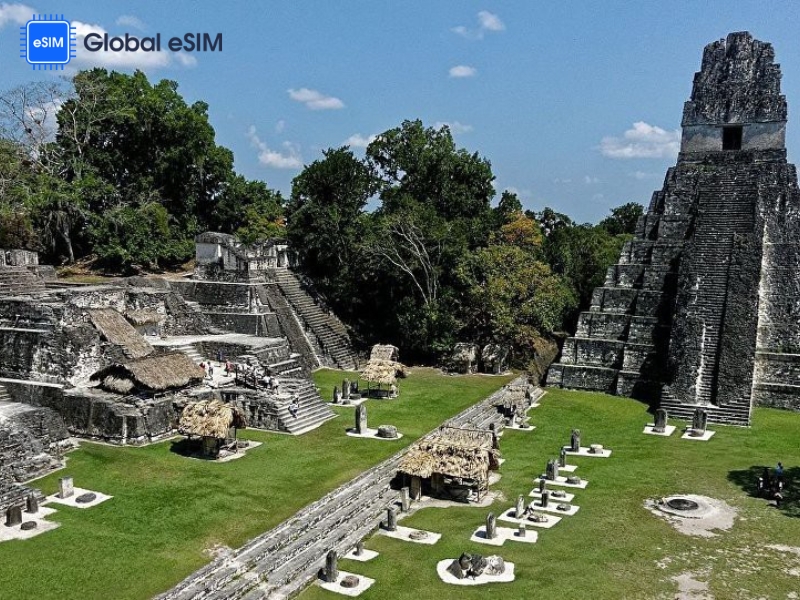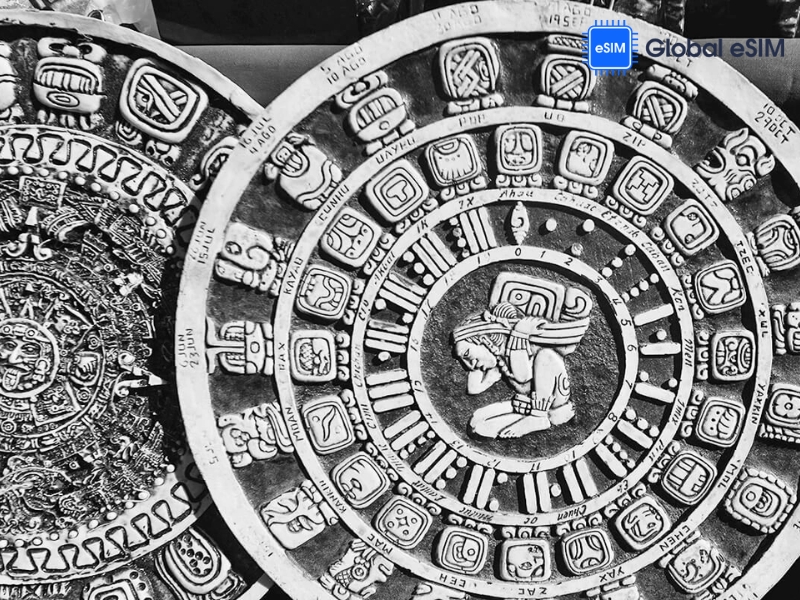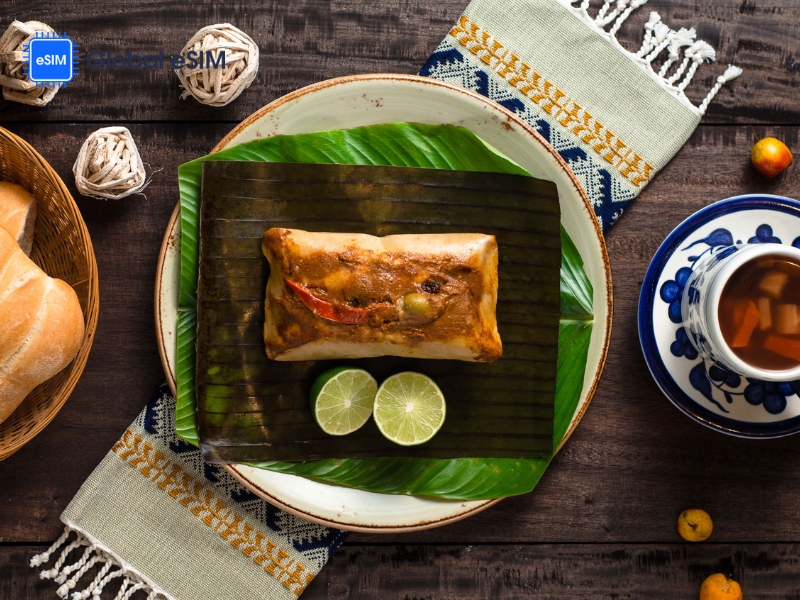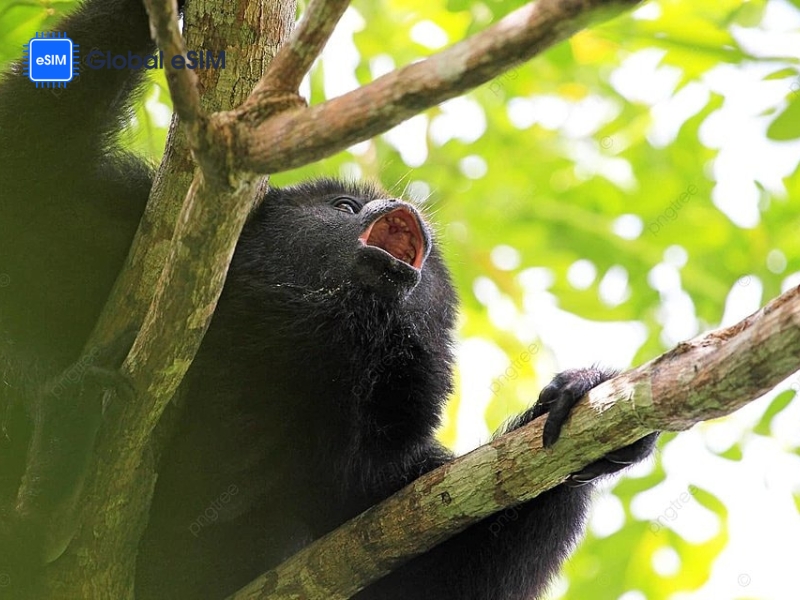Nestled between Mexico to the North and West and Belize and Honduras to the East, Guatemala is a captivating destination that often surprises travellers with its rich cultural tapestry and stunning natural landscapes. Known as the "Land of the Eternal Spring," this Central American gem boasts a mild climate inviting year-round exploration.
This blog will uncover some interesting facts about Guatemala, highlighting its unique heritage, breathtaking scenery, and culinary delights. So, whether you're planning a trip or simply looking to learn more about this extraordinary country, join us as we explore the many facets of Guatemala that make it a truly remarkable place to experience.
1. Home to Ancient Civilizations
Guatemala was once the heart of the Maya civilization, which thrived from around 2000 BC to 1500 AD. The Maya were known for their advanced astronomy, mathematics, and architecture knowledge. They built impressive city-states like Tikal, with towering pyramids and intricate carvings. The ruins at Tikal, now a UNESCO World Heritage Site, reveal insights into the Mayan way of life, including their religious practices and social structure.

2. Diverse Languages
While Spanish is the official language, Guatemala has 24 distinct languages, including 21 Mayan languages, Xinca, and Garifuna. This linguistic diversity reflects the country's rich cultural tapestry. Many indigenous communities continue to speak their native languages, preserving their identities and traditions. Language revitalization efforts are increasingly important in promoting cultural heritage and fostering community ties.
3. A Land of Volcanoes
Guatemala has over 30 volcanoes, with three—Pacaya, Fuego, and Agua—active. These volcanoes offer not only stunning landscapes but also opportunities for adventure tourism. Hiking up Pacaya, for instance, allows visitors to witness volcanic activity firsthand, including flowing lava and unique geological formations. The surrounding areas are also rich in biodiversity, making them essential ecological zones.
4. The Mayan Calendar
The ancient Maya developed a sophisticated calendar system that includes the 260-day Tzolk’in and the 365-day Haab’. This complex system was used for agricultural, ceremonial, and social purposes. Many indigenous communities still celebrate traditional calendar dates, linking them to farming cycles and cultural festivals. The significance of the Mayan calendar continues to resonate, highlighting the Maya's deep connection to the cosmos.

5. Rich Biodiversity
Home to lush rainforests and diverse ecosystems, Guatemala is a haven for wildlife, including jaguars, ocelots, and over 700 species of birds. The country’s varied climate and geography contribute to its rich biodiversity, from highlands to coastal regions. Conservation efforts are crucial to protecting these ecosystems, as many species face deforestation and habitat loss threats. National parks like Sierra de las Minas serve as critical reserves for wildlife.
6. Traditional Textiles
Guatemalan textiles are renowned for their vibrant colours and intricate patterns, often reflecting the cultural identity of different regions. Each piece is typically handwoven using traditional techniques passed down through generations. The designs usually tell stories or represent local myths, making them beautiful items and cultural artefacts. The textile industry supports local artisans and contributes to the economy while promoting sustainable practices.
7. Coffee Paradise
Guatemala is famous for its high-quality coffee, particularly from regions like Antigua and Huehuetenango. The unique microclimates, volcanic soil, and altitude contribute to the distinct flavours and aromas of Guatemalan coffee. The country’s coffee is often characterized by its rich, full-bodied taste with fruity and floral notes. Coffee production is vital to the economy, supporting thousands of families and fostering a culture of coffee appreciation.

8. Colonial Architecture
Antigua Guatemala, the former capital, is celebrated for its well-preserved colonial architecture and cobblestone streets. Designated as a UNESCO World Heritage Site, the city showcases stunning baroque churches, colourful buildings, and a rich historical atmosphere. Visitors can explore landmarks like the Santa Catalina Arch and La Merced Church, which reflect the city's colonial past and its resilience following the earthquakes that struck in the 18th century.
9. Tikal National Park
Tikal is one of the most significant archaeological sites of the Maya civilization, sprawling across 222 square miles. Its impressive structures, including temples and palaces, surround dense jungle. The park is not only significant for its archaeological value but also for its biodiversity. Visitors can explore the site while observing wildlife, such as howler monkeys and exotic birds, making it a unique blend of history and nature.
10. Highland Markets
The highland markets, particularly in towns like Chichicastenango, are vibrant hubs of local culture. These markets are famous for their colourful handicrafts, textiles, and traditional foods. They provide a space for local artisans to showcase their work, preserving traditional crafts and fostering community. The market days are bustling with activity, where visitors can immerse themselves in local customs, taste traditional foods, and witness cultural performances.
11. Unique Cuisine
Guatemalan cuisine is a delightful blend of Mayan and Spanish influences, featuring a variety of flavors and ingredients. Staples include corn, beans, chillies, popular dishes like pepián (a rich meat stew) and tamales. Traditional meals often incorporate fresh, locally sourced ingredients, typically enjoyed with handmade tortillas. The culinary scene reflects the country’s cultural diversity and allows visitors to experience authentic flavours.

12. Independence Day
Guatemala and several other Central American countries celebrate its Independence Day on September 15. The day is marked by parades, fireworks, and cultural festivities, celebrating national pride and unity. Schools and communities unite for colourful processions featuring traditional dances, music, and costumes, showcasing the country's rich heritage. This vibrant celebration fosters a sense of identity and remembrance of the struggles for freedom.
13. Natural Wonders
Lake Atitlán, often referred to as one of the most beautiful lakes in the world, is surrounded by towering volcanoes and charming indigenous villages. The lake is a popular destination for tourists seeking relaxation, adventure, and cultural experiences. Activities such as kayaking, hiking, and visiting local markets allow visitors to appreciate the area's natural beauty and rich traditions. The stunning scenery and serene atmosphere make it a perfect escape.
14. Mayan Rituals
Many indigenous communities in Guatemala continue to practice ancient rituals and ceremonies, preserving their customs and beliefs. These rituals often involve offerings to the earth, ancestor veneration, and agricultural ceremonies tied to the lunar calendar. Traditional healing practices and spiritual rituals play a significant role in community life, reflecting a deep connection to their ancestral heritage and the natural world.
15. Historical Impact
Guatemala has a complex history marked by colonization, civil war, and struggles for social justice. The effects of the 36-year civil war, which ended in 1996, are still felt today, influencing social dynamics and governance. Despite these challenges, the country has made strides towards reconciliation and development, with many communities working to preserve their cultural identities while addressing contemporary issues.
16. Biodiversity Hotspot
As a recognized biodiversity hotspot, Guatemala has numerous protected areas and national parks dedicated to conserving its unique flora and fauna. The country’s diverse ecosystems, from rainforests to cloud forests, support many species, many of which are endemic. Conservation efforts, often led by local organizations, aim to protect these habitats from deforestation and climate change, ensuring the survival of wildlife and indigenous cultures.

17. UNESCO World Heritage Sites
In addition to Tikal and Antigua, Guatemala boasts several other UNESCO World Heritage Sites, including the archaeological site of Quiriguá, known for its impressive stelae and the cultural landscape of the ancient Maya. These sites highlight the country’s rich historical and cultural significance, attracting scholars and tourists alike. Preservation efforts are vital for maintaining these treasures for future generations to explore and appreciate.
18. Cultural Festivals
Guatemala hosts numerous colorful festivals annually, reflecting its rich cultural traditions. Semana Santa (Holy Week) celebrations in Antigua are particularly famous for their elaborate processions, intricate carpets made of colored sawdust, and vibrant displays of faith. Other festivals, such as the Day of the Dead and the Feast of Santo Tomás, showcase local customs, music, and dance, creating a lively atmosphere that brings communities together.
19. Warm and Welcoming People
Guatemalans are known for their hospitality and warmth. Visitors often leave with memories of friendly smiles and a deep appreciation for the country’s culture. A strong sense of community and family values permeate daily life, making interactions with locals memorable and enriching. This welcoming spirit invites travellers to engage with the culture, fostering connections that transcend borders.
Conclusion
Guatemala is a treasure trove of history, culture, and natural beauty. There's so much to discover, from its ancient ruins and stunning landscapes to its rich traditions and delicious cuisine. Whether you’re a history buff, an adventure seeker, or a foodie, Guatemala has something to offer everyone. As you prepare for your journey, remember to stay connected with Global eSIM to make the most of your travel experience.
By highlighting these interesting facts about Guatemala, you’ll enrich your travel knowledge and inspire others to explore this enchanting destination. Happy travels!
